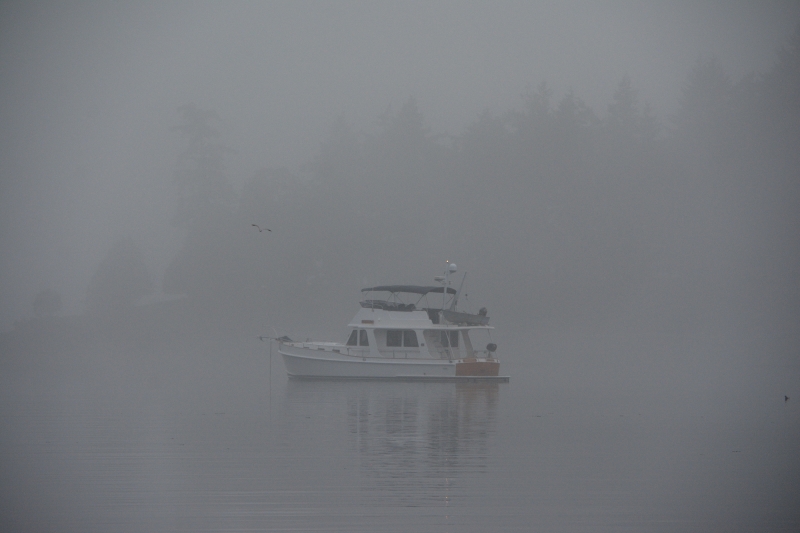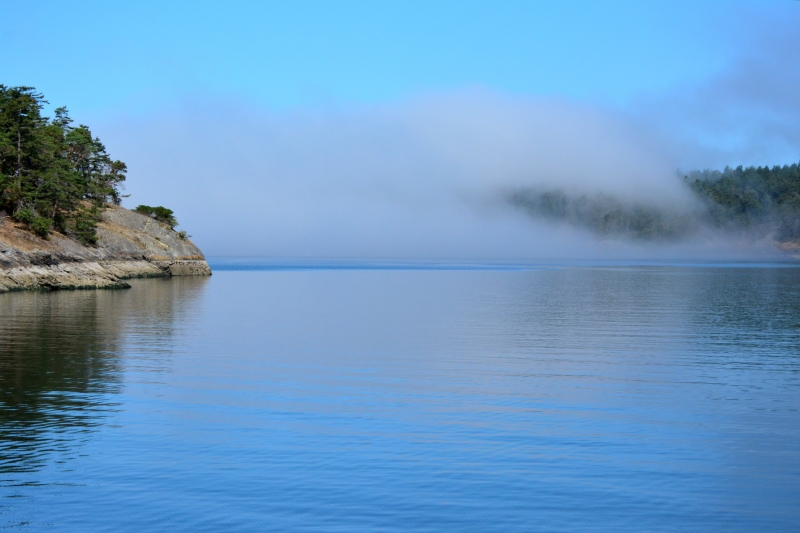Navigation in the Fog
14th August 2023
Even though the back of your neck might prickle and the hairs rise up at the sight of fog creeping across the horizon, there is no need to be overly concerned about navigation or running onto the rocks or other vessels. GPS, chartplotter, AIS and radar help address these issues. It’s more an issue about other boaters around you who may be over reliant on these systems; the same systems designed to make us safer.
One way to be competent in the fog is to become proficient with your radar/chartplotter/AIS and to use them regularly during times of good visibility; then, when the fog moves in, you will know just what to do and have confidents in the use of your systems. When operating in low visibility it’s recommended to set the radar and chart plotter on a lower range (a quarter to a third of a mile), which are the most accurate, bumping it up periodically scan the ranges for traffic farther out.
Use a paper chart along with the chart plotter because it allows you to see the bigger picture, especially in unfamiliar water. With a paper chart you can stay several steps ahead of your course.
Communication with other vessels is key while navigating in the fog. If you’re unsure of a vessel’s course, reference its position and hail the occupants on the VHF. Regardless of the visibility, always operate the VHF radio in the scan mode so you can monitor multiple channels, including the Vessel Traffic System (VTS) for the area.

Many mishaps that occur during periods of reduced visibility are the result of excessive speed for the conditions. When the fog rolls in, throttle back to a speed that will allow the boat to stop within the circle of visibility.
It’s often more important to be seen in fog than to see for yourself, and the best way is to produce a solid radar echo. Unless your boat is huge and made of steel, a radar reflector permanently mounted as high as possible is suggested. Also, turn-on the running lights to increase the chance of being seen.
Commercial ships won’t hear a foghorn, and they couldn’t do much about it anyway, but sounding your horn every two minutes, as the COLREG navigation rules require, helps a lot with small craft traffic. Don’t forget, when under power it’s one prolonged (4 to 6 seconds) blast. A power driven vessel that is stopped is required to sound two prolonged blasts that are separated by about two seconds of silence.
If at all possible, amend your course to best avoid commercial and fishing vessels and when in confined waterways broadcast Sécurité Call on the VHF radio to make other vessels in the area aware of your intentions.
Although it’s comforting to get a visual on a navigational aid or hear the gong of a bell, chances are others have the same intention. Therefore, to miss the potential congestion select a waypoint a safe distance from the mark to avoid the herd looking for the same navigational aid or landmark.

Don’t assume you are able to see all other boats on your radar. When boaters hear fog, most think radar and rely on it in poor visibility. That’s fine, but do not over-rely on this technology. Some skippers feel so confident in their electronics they’ll pick up speed. That’s never a good idea in fog, particularly since some boats are weak targets and may not be picked up until it’s too late.
Don’t run with the autopilot in low visibility. Unless you are blessed with lighting quick reactions, the delay between hitting and autopilot stand-by or dodge key and correcting the course could be too much. Some objects such as fishing nets, crab traps, floating debris, or even another boat may not always appear on the radar.

Don’t keep moving if you become disoriented. If for whatever reason you become disoriented or unsure of your surroundings, just stop and regroup. You can verify your position, re-orient yourself and take a breath. Flying off into uncertainty may be one way to go through life but not on a boat in reduced visibility.
(Deane Hislop in Partnership with Freedom Marine)


